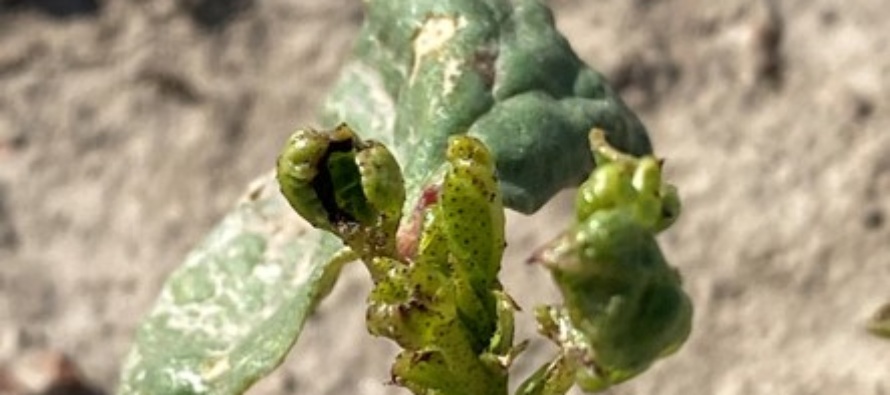2024 Thrips Considerations

Related Articles
- Fertilizing Cotton with Poultry Litter 5
- Mississippi Cotton Insect Situation of 2010: A Look Back 3
- Bayer CropScience-O.A. Cleveland Weekly Cotton Commentary 0
Latest Tweets
At-planting:
Since the development of widespread resistance to neonicotinoid seed treatments, we have been recommending the use of Acephate (Orthene) at planting, either as an overtreatment at 6.4 oz per cwt or up to a pound in-furrow. For several years, this additional at-planting treatment minimized the need for supplemental foliar applications in most situations. Moving into 2023, we are no longer recommending the use of Acephate at-planting. Since 2020, there has been a steady decline in the overall efficacy of organophosphates on thrips in the midsouth. Looking at the data in the figure below, you can see that Gaucho seed treatment alone provides the same level of control as Aeris, AgLogic, Gaucho plus Acephate (both overtreated and in-furrow).
If foliar treatment is needed, remember that the threshold is an average of one thrips per plant with immatures present. Generally, the presence of immatures is a good indication that seed treatments are no longer providing control. In years where we have extremely high thrips numbers, you may need to treat based solely on adults in some situations . It will be important to let the plants guide your decision-making process.
Foliar Applications:
At this time, MSU extension is only recommending the use of Intrepid Edge. If you chose to use something like Orthene and Bidrin be mindful that you may not get acceptable control, however in some areas either product has worked.
For the last several years, we have sent tobacco thrips population to the University of Tennessee for organophosphate bioassay resistance screening. Based off last years results, populations seem to be highly resistant to Orthene (40% control), which is consistent with what we have been seeing in our field trials in addition to field calls. Bidrin, however, seems to be more inconsistent based on location. In some areas, people have seen decent control, while others haven’t. These bioassay results would suggest the same inconsistent control pattern (42-82% control). Across the midsouth, Orthene has continued to provide unacceptable control. Additionally, serveral calls come in every year about insecticide failures with Intrepid Edge. According to our field trials and lab bioassays, this does not appear to be the case. Oftentimes, adult tobacco thrips recolonization is being equated to an insecticide failure. However, these are two very different things. In our lab bioassay results, Radiant (the component of Intrepid Edge that controls thrips) consistently provided 100% control. In order to get the best results out of Intrepid Edge, it is important to ensure that you are incorporating a surfactant, using proper spray tips that deliver fine droplets, and applying a higher GPA (10+).
If you have any questions about at-planting or foliar thrips options, feel free to call any of three of us on our cells. Our contact information can be found under the contact info.






Let me tell You a sad story ! There are no comments yet, but You can be first one to comment this article.
Write a comment